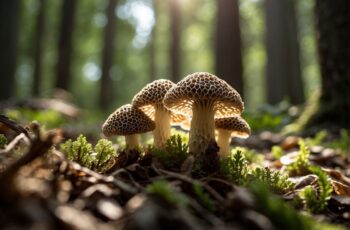Morel mushrooms, with their distinctive honeycomb-like appearance, are a sought-after treasure among foragers. They are not only prized for their rich, nutty flavor but also for the thrilling hunt they offer mushroom enthusiasts each spring. Identifying morel mushrooms involves looking for their cone-shaped, pitted caps along with a cream to dark brown coloring. Found across North America, these fungi flourish in woodland areas, particularly in spots where the ground has been disturbed by events such as forest fires or floods.
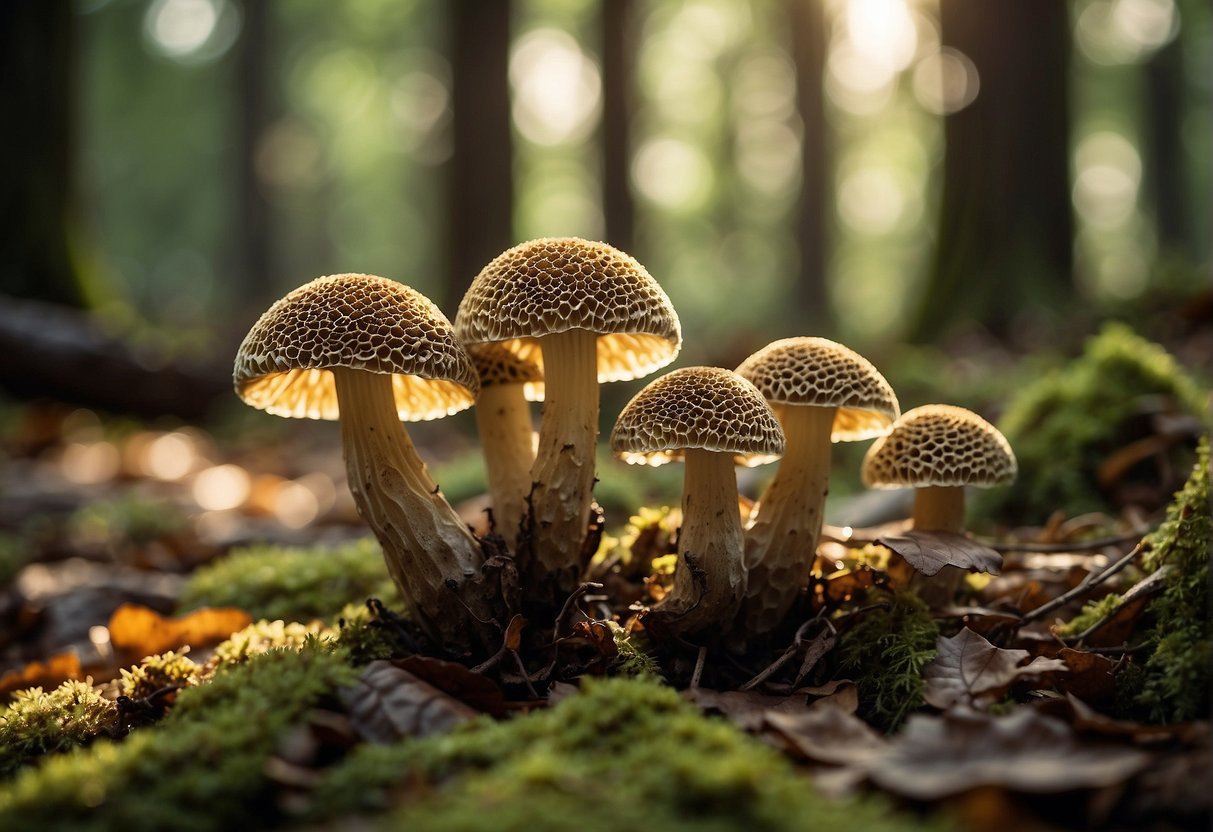
To correctly identify a true morel mushroom, it’s crucial to be aware of their false counterparts as well, which can be toxic. True morels have a unique structure; they are entirely hollow from the tip of the cap to the bottom of the stem, which is one of the hallmark traits setting them apart from potentially harmful look-alikes. Before embarking on your foraging adventure, familiarizing yourself with the essential identifying features and safety guidelines will ensure a rewarding and safe experience.
Key Takeaways
- Morels are beloved for their flavor and the rewarding challenge they offer foragers.
- Correct identification is vital for safety and differentiates true morels from toxic varieties.
- Knowledge of mushroom habitats and ethical harvesting practices enhances the foraging experience.
Basics of Morel Identification
Morel mushrooms are a forager’s treasure, famous for their unique honeycomb appearance and exquisite taste. Mastering the art of identification is crucial for both safety and success in harvesting these woodland delicacies.
Morphology of Morels
The shape of the morel is critical for identification. Morels have a distinctive cone-shaped cap that is ridged and pitted, resembling a honeycomb. This structure is a key identifying factor. The texture of the cap is another hallmark, which sets it apart from other mushrooms. Moreover, morels are hollow inside, from the tip of the cap to the bottom of the stem, a characteristic not shared with many look-alikes.
Color Variations
Morels can display a variety of colors ranging from yellow, black, white, gray, to gold. Color can sometimes help in identification, for example, the yellow morel (Morchella esculenta) typically features a lighter hue, while the black morel (Morchella elata) showcases a darker coloration.
Distinguishing True vs False Morels
True morels are edible and sought after; however, false morels such as gyromitra and verpa can be toxic and should be avoided. True morels will have a hollow interior and caps connected at the base of the stem, whereas false morels often have a solid stem or a cap attached only at the top. Knowledge of their appearance is essential to avoid consuming poisonous varieties that contain gyromitrin.
Habitats and Growing Conditions
Morels flourish in various habitats across North America, especially the Midwest, as well as in parts of Asia. They grow in wooded areas and forests with a preference for trees like elm, ash, oak, sycamore, and hickory. Often found near dying or dead trees, these fungi thrive in soils enriched with organic matter. Old apple orchards are also known spots for morel growth, and environmental conditions such as forest fires can stimulate the appearance of these mushrooms.
Foraging Tips and Techniques
Foraging for morels requires patience and technique. Hunters often use GPS to mark spots of previous successes. After rain and in suitable habitat near streams or burns, start your hunt. Ensure you’re equipped with a good guidebook or device to assist with identifying the mushrooms, and always refrain from over-harvesting to ensure morels regenerate each season.
Morel Species Overview
There are several common species of morel mushrooms like the common yellow morel (Morchella americana), black morel (Morchella angusticeps), half-free morels (Morchella semilibera), and others. Each species varies slightly in size, shape, and preferred growing conditions but sharing the same fundamental morphological characteristics. Notably, morels have been utilized in traditional medicine for their medicinal properties.
With these guidelines in mind, you’re well on your way to successfully identifying and safely enjoying the hunt for morel mushrooms. Armed with understanding and respect for the forest, you’ll find that foraging for morels can be as rewarding as it is enjoyable.
Safety and Ethical Considerations
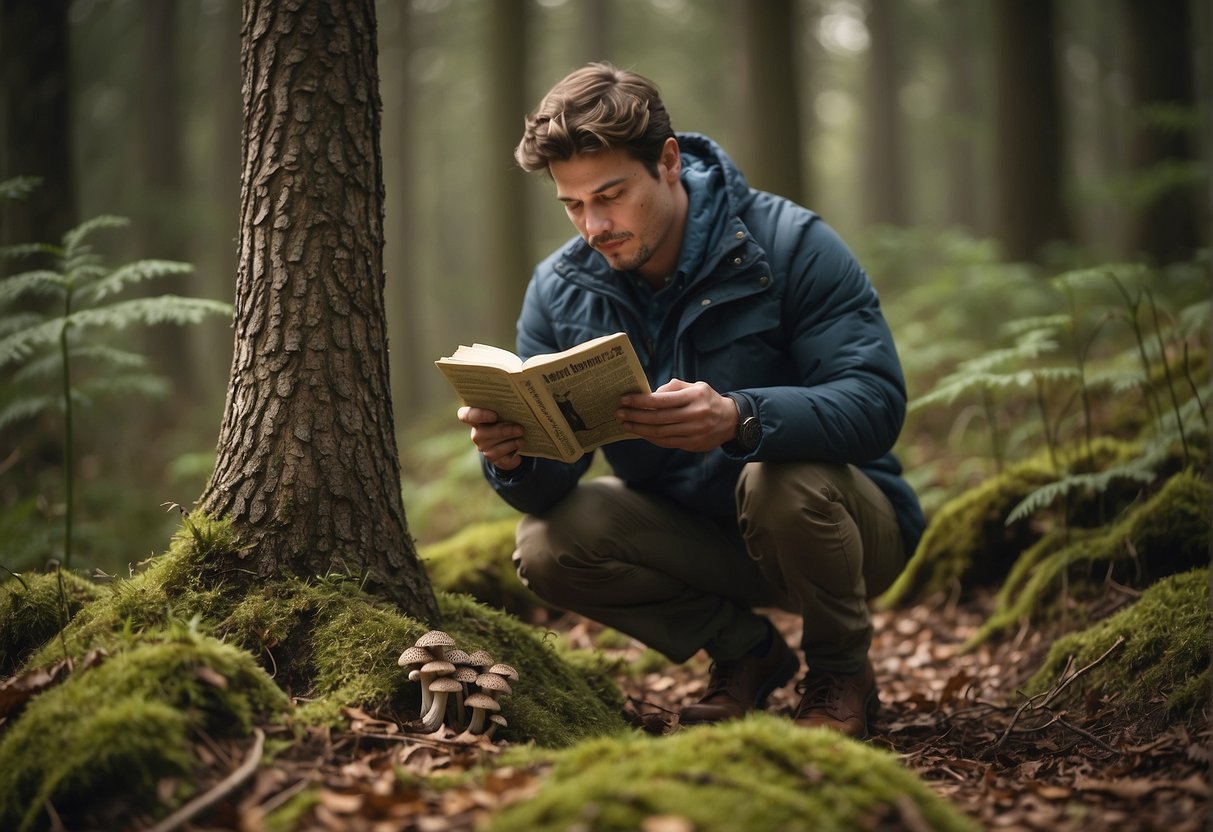
Embarking on the hunt for morel mushrooms offers an engaging connection with nature, but it’s crucial to distinguish between edible morels and their toxic look-alikes. Furthermore, adopting sustainable foraging practices not only helps preserve these natural treasures but also ensures the continued enjoyment of fungi foraging for years to come.
Health Risks of False Morels
False morels like the Gyromitra mushroom are often mistaken for their edible counterparts but can harbor the toxin gyromitrin, which poses serious health risks if consumed. Even seasoned foragers can fall prey to these imposters. Carefully inspect the cap and stem – true morels are completely hollow when sliced lengthwise, a key identifier not seen in false varieties. It’s not enough to just recognize morels; you must take the next step to cook them properly, as heat helps to dissipate any remaining toxins.
Sustainable Foraging Practices
When you forage, do so with an ethical compass. Preserve the natural habitats and sustainable numbers of wild mushrooms for future generations. Follow these guidelines:
- Use a mesh bag for collecting to allow spores to disperse and foster new growth.
- Harvest selectively; take only what you need and leave the smallest or immature ones to grow.
- Cut the stems with a knife rather than pulling from the ground to protect the mycelium below.
- Respect private property and public laws; only forage where it’s legally and ethically permitted.
Remember, the traditions of foraging are a shared heritage – it’s your responsibility to uphold them with care and consideration.
Cleaning and Storage
Before you head into the woods for mushroom foraging, know how to properly handle your morels post-harvest. Cleaning is crucial to remove debris, and proper storage is key to maintaining their unique, meaty texture until you’re ready to cook.
Proper Cleaning Techniques
When your foray is successful and you’ve harvested some morels, start by gently shaking them to dislodge any loose dirt. Remember, morels are delicate, so a gentle touch is important. A colander can serve well for this initial cleaning. Afterwards, rinse them briefly in cold water to remove any remaining grit. Some foragers also recommend a light saltwater soak to help evict any insects hiding within, but limit the soak time—morels are like sponges and too much water can spoil their texture.
Preserving Morels
If you’ve found more morels than you can use right away, preserving them is a smart move. You can dry morels by slicing them in half lengthwise and placing them in a dehydrator or low oven. This method intensifies their flavor and they can be rehydrated for use in recipes later on. Alternatively, freezing is a viable option after properly cleaning them.
Storing Morels
For short-term storage, keep your morels fresh by refrigerating them. Spread them out on a paper towel-lined tray, ensuring they are not touching. Cover them with another paper towel and store in a refrigerator. This method will keep them fresh for several days. For longer storage, properly freeze morels after blanching or drying them, ensuring they are completely cool and dry before sealing in a freezer-safe container.
Preparing for Consumption
Before you’re ready to bring the forest’s bounty to your table, you’ll need to prepare your morels. If they were dried or frozen, rehydrate or thaw them first. When fresh, simply ensure they are clean, then you can opt to cook them whole or slice them. Morels are versatile – sauté, grill, or roast them for a delicious addition to your recipes. Always cook your morels; consuming them raw is not recommended.
Culinary Uses and Recipes
If you’re a fan of the great outdoors and happen to stumble upon morel mushrooms, you’ve struck culinary gold. These edible gems offer a delightful meaty texture and are a powerhouse of flavor suitable for various recipes. Before you start cooking, ensure you correctly identify morels to ensure they’re safe to eat.
Basic Cooking Methods
To preserve the unique quality of morel mushrooms, begin with simple cooking methods. First, clean your morels by gently brushing off any debris and rinsing them quickly under cold water. Cooking can be done in several ways:
- Sautéing: Heat a bit of butter or oil in a pan and cook the morels until they’re golden brown. This method helps to bring out their nutty, earthy flavors.
- Grilling: Skewer morels or place them in a grill basket, and cook them over medium heat. The smoky character of grilled morels is superb for a forest-fresh feast.
- Drying: Morels can be dried in a dehydrator for long-term storage and later rehydrated for cooking.
Incorporating Morels Into Dishes
Morel mushrooms are versatile and enhance the flavor profile of countless dishes:
- Pastas and Risottos: Adding sautéed morels to pasta or risotto creates a luxurious, creamy dish enriched with their earthy tones.
- Soups and Sauces: Morels contribute rich, deep flavors and a boost of fiber and iron to soups and sauces.
- Protein Pairings: Pair them with chicken, pork, or fish for a dish where the delicate texture of morels complements the main protein.
Remember, cooking is part of the adventure. Each morel mushroom you cook delivers a bite of the wilderness right to your palate.
Contribution to Ecosystem and Culture
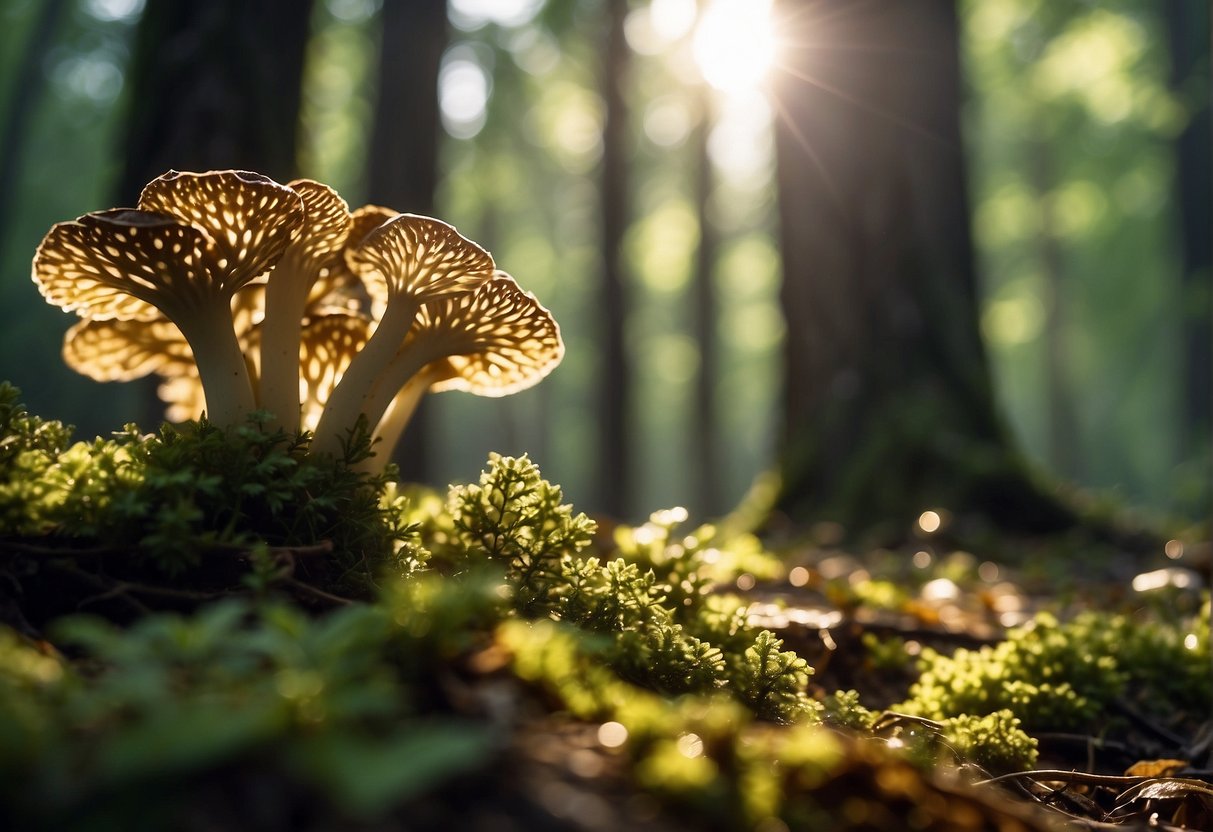
When venturing into the woods, you might be lucky enough to spot the elusive morel mushroom. These fungi are not only a prize in culinary circles but also play a critical role in forest ecosystems and human culture.
Morels in Ecosystems
Morel mushrooms, which include common species such as Morchella esculenta and Morchella elata, are integral to forest environments. Through their extensive mycelium networks, they act as natural recyclers, decomposing organic matter and returning vital nutrients to the soil. This symbiotic relationship enhances soil fertility and helps maintain the health of forests. Furthermore, the spores of morel mushrooms contribute to the propagation of the species, ensuring that these beneficial fungi continue to thrive.
Not only do they support soil stability, but morel mushrooms also play a part in safeguarding against erosion, making them a key component in the resilience and sustainability of forest ecosystems.
Morels in Human Culture
- Culinary Delights: Revered for their unique taste, morel mushrooms are a treasured ingredient in many recipes. Wild mushrooms like morels are often the centerpiece in gourmet dishes.
- Traditional Medicine: In some cultures, morels are valued for their properties in traditional medicine, thought to provide health benefits beyond their nutritional content.
- Mushroom Foraging: As an outdoorsman, you may appreciate the tradition of mushroom foraging, a practice steeped in history and a thrilling way to connect with nature. The hunt for morels is a rite of spring for many.
The cultural significance of morels extends beyond the plate; it encompasses stories, traditions, and even festivals that celebrate these fruits of the forest floor. Whether cherished for their rarity and culinary versatility or for the fascinating role they play in our ecosystems, morel mushrooms continue to enchant and benefit both nature and humans alike.
Advanced Tips for Morel Enthusiasts
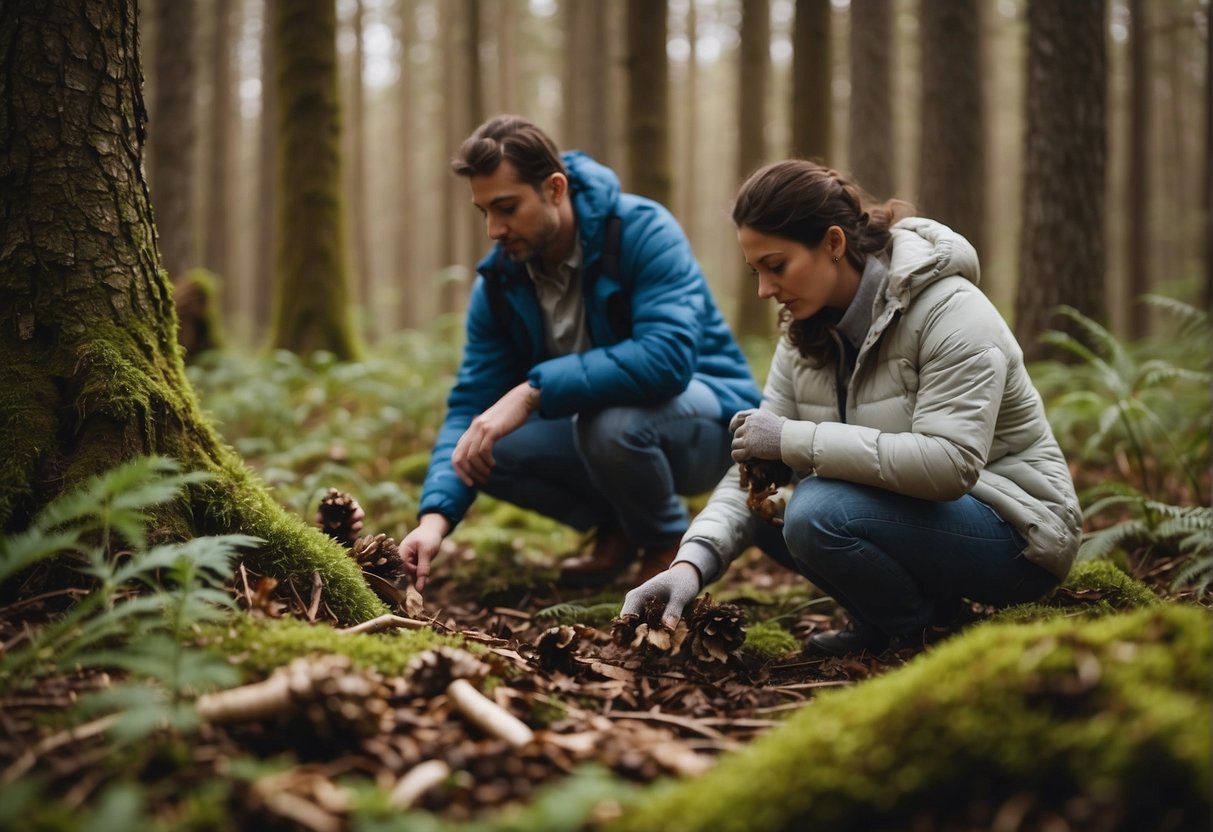
As you sharpen your morel foraging skills, these advanced strategies can enhance your experience and success rate. Embrace the latest technology, understand when expert help is pivotal, and immerse yourself in the morel community through festivals and events.
Using Technology for Morel Hunting
Modern foragers have an array of GPS and mapping tools at their fingertips. Apps and online resources can help you track your foraging path, log your findings, and even predict potential morel hotspots based on environmental data. Work smarter by utilizing satellite imagery to scout for areas rich in morels before setting foot in the forest.
When to Seek Professional Guidance
Even seasoned hunters sometimes encounter uncertainties. If you’re unsure about a particular find, consider reaching out to a local foraging guide or mycologist. Their expertise is invaluable, especially when distinguishing morels from their toxic look-alikes. Professional-led foraging excursions can also provide hands-on experience and tips specific to your local hunting seasons.
Participating in Morel Festivals and Events
Festivals and community events are not just celebratory gatherings but also opportunities for learning. By attending, you can connect with other morel enthusiasts, exchange tips, and deepen your knowledge. Many events host workshops on mushroom foraging, sustainable practices, and more. Plus, they’re an excellent way to support and engage with the mushroom foraging community.


